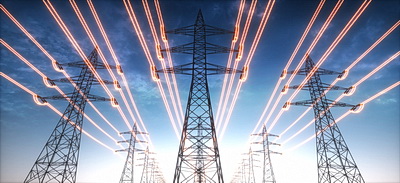
Electrical current is the measure of electrical flow. It’s measured in amperes, or amps for short. The current refers to the number of electrons that pass by a point in an electrical conductor in one second, and it’s usually given in units as milliamps (mA) or microamps (μA). This article explains what electrical current is and how it works. Keep reading to learn more about this topic!
How Does Electrical Current Work?
Electrical current travels through a wire (conductor) to reach a device (eg. light bulb) which causes the device to enable. This traveling of electrons through the wire to the device is called a circuit. It is the pathway for an electrical current to flow from the source to the load.

There are three basic parts to a circuit:
-
- The “source,” or “sourcing device,” is where the electrons come from. This can be a battery, a generator, or the flow of electricity from a wall outlet.
- The “load,” or “dumping device,” is where the electrons go after completing the circuit. This could be a light bulb, an appliance, or some other device.
- The “pathway,” or “wiring,” is the middle part that brings the electrons from the sourcing device to the dumping device. The wiring is almost always made of copper, iron, or in electronic devices, a semiconductor. The current can only flow when the circuit is complete. When the circuit is broken, the current stops.
What Is Electrical Conductivity?
Electrical conductivity is the ability of a material to allow an electrical current to flow through it. The term conductivity is used to describe the extent to which a material will allow the flow of an electrical current. If a material has high conductivity, such as copper, it means that it is very good for allowing electrons to flow rather freely through the wire, while low conductivity, such as rubber will inhibit the electron flow to a greater extent, known as resistance.
The harder it is for the electrons to flow, the more resistance the material has. That’s why the rubber is used to insulate the copper wire in almost all manufacturing that will transmit electric current. Rubber has a high resistance rating.
Wood and glass are two types of materials that have very low conductivity ratings. Have you ever used wood to connect to an electrical circuit or battery? On the other end, copper is one of the most conductive materials around and that is why you see so many wires and/or cables that have copper wiring.
Besides the type of material that is used, electrical conductivity can be affected by several factors. For example, temperature, and the presence of contaminants like dust and water.
What is Voltage?
Turn on your water faucet about a quarter of the way and place a cup under it. Notice how fast (or slow) the water is running to fill the cup. How long did it take?
Now turn the faucet to make the water run faster. When you do this, the water fills up the cup sooner.
This is your voltage (actually an equivalent of voltage). The faster the water comes out, the more the force or pressure of water will be used. In electricity, this means that the more the pressure, the faster the electric current will come out to power an electrical device. The bulb will light up quicker, which you won’t notice, since it happens so quickly, but that is what will happen.
Ohm’s Law
A law that states the relationship between voltage, current, and resistance in a conductor (or insulator). It states that voltage is equal to current times resistance or E=IR. So the voltage equates to the amount of current that flows through the wire but includes the amount of resistance the current is subjected to.
Types of Electrical Current
There are two basic types of electrical current: Direct Current (DC) and Alternating Current (AC). A direct current is a constant flow of electrons that always flows in the same direction. It can flow in one direction or it can flow in both directions. It is provided by batteries, solar cells, and hydroelectric plants. Electrical current can be changed from DC to AC by using a device called a transformer. Transformers are used to change the voltage of the electricity.
Summary
Electrical current is the flow of electrons through a conductor. A complete circuit is where electrons flow from the source to the load through a pathway or wiring. Electrical current works when a circuit is complete. A circuit is a pathway for an electrical current to flow from the source to the load. There are 3 basic parts in a circuit. The source is where the electrons come from. The load is where the electrons go after completing the circuit. The pathway is the middle part that brings the electrons from the sourcing device to the dumping device.
There are two basic types of electrical current: Direct Current (DC) and Alternating Current (AC). A direct current is a constant flow of electrons that always flows in the same direction. AC can change from DC to AC by using a device called a transformer.
